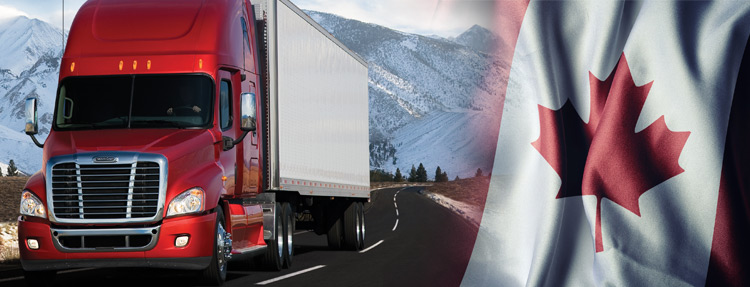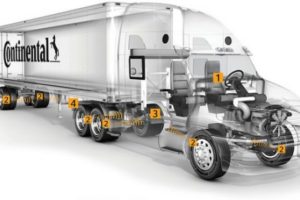The Federal Motor Carriers Safety Administration (FMSCA)’s electronic logging device (ELD) mandate continues to be a hot topic since the administration officially began its soft enforcement in December 2017 and hard enforcement in April of 2018. Though U.S. fleets currently report a 97 percent ELD compliance rate, the quality of ELD solutions available on the market varies. Fleet operators have at least two reasons to be concerned: one, last year the FMSCA noted that roughly 300 ELD devices in the U.S. market did not meet its technical specifications for data transfers, a necessity for inspections by law enforcement; and two, the FMSCA allows American ELD suppliers to certify their own solutions, making it difficult for regulators and vehicle inspectors to determine whether a device actually complies with each of the mandate’s rules.
The first issue presents a challenge for U.S. fleets, while the second could soon be a problem for fleets that regularly transport cargo across the border.
Though Canada’s own ELD regulations are still being finalized, it’s anticipated that the country’s ELD mandate will have some key differences from U.S. regulations. In particular, the Canadian Trucking Alliance wants all ELD solutions operating in Canada to have third-party certification. If requiring third-party certification holds true, it will be reflective of Canadian law makers taking action on a lesson learned from the U.S. ELD rollout and hope to avoid the situation that lead to the roughly 300 ELD devices that did not meet its technical specifications of the US mandate.
That said, both issues also present an opportunity for U.S. fleet owners and drivers to kill two birds with one stone as they prepare for compliance with both the Canadian ELD and the final ELD deadline in the U.S.
Here are three easy tips to keep in mind as you do so.
Ensure Your ELD Vendor is Third-Party Verified
The American Trucking Association has long argued that a trusted third party should verify all ELD devices to ensure that the new standards are being enforced. While the Canadian mandate has not yet been enacted, it’s clear that ensuring a third party has verified that a fleet’s chosen ELD solution meets U.S. laws is a crucial step.
When conducting research into potential ELD vendors, it’s important that fleet managers ask how a given company’s specific ELD solution meets the American and expected Canadian mandates. Keep in mind that ELD solutions that meet the FMSCA standards must include the following features, among others:
- Automatic recording of engine status, vehicle motion status, miles driven, and engine hours.
- The ability to display a graph of a driver’s daily status changes, either on screen or a printout.
- A driving status that lapses when the vehicle has not been moving for 5 consecutive minutes and the driver has not responded to an ELD prompt within 1 minute.
- Wireless web service and wireless email access.
- The inability to alter or erase a driver’s ELD records or the data streams used to collect their information.
- The ability to monitor itself for malfunctions and/or data inconsistencies and record them.
Choose a Partner, Not Just a Vendor
An ELD vendor should be able to act as a partner and not simply a device provider. This means fleet managers should be able to rely on their vendor to guide them through the complex nuances of both the U.S. mandate and the upcoming mandate from Canada. In fact, fleet managers should research the industry credibility, knowledge, and longevity of providers since they may need to anticipate consolidation of vendors (as with the recent announcement an ELD vendor made discontinuing its ELD program). It will also be critical for fleets that are running on AOBRD devices to determine if those devices are ELD-ready. If those devices aren’t ready to be switched over to ELDs, it will be time to identify a new vendor to meet your ELD compliance needs. When picking an ELD vendor fleets should leverage the process as an opportunity to invest in the fleet management technology of their fleet, not just checking the box on ELD compliance.
Fleet managers should be comfortable with working with their ELD vendors on a training plan for operators. By having an ELD vendor as a trusted partner, fleet managers not only gain a better understanding of their fleets’ ELDs but can develop comprehensive training sessions to directly address law enforcement needs during roadside inspections. Inspections will go more smoothly if drivers are familiar with their devices, making training the key to getting them through inspections and back on the road as efficiently as possible.
Ask vendors what they are doing to help prepare customers for the ELD Mandate in Canada – you may even consider co-hosting these training sessions with ELD vendors for drivers that cross the border to ensure they are prepared. This type of real-time or role-playing training will prepare U.S. drivers to comply not only with native inspections, but the more stringent inspections expected from Canada.
Avoid Unwanted Inspections by Law Enforcement
While training drivers, fleet owners should consider providing their drivers with a law enforcement-related checklist they can verifiably complete before being assigned a route. These checklists should emphasize key differences between the U.S. and Canadian ELD mandates and include a step-by-step guide on what to expect during a roadside inspection.
Think about including questions that will likely rise once the Canadian rule set is final. Some examples include:
- What materials should you be prepared to present to law enforcement when crossing the border?
- Do you have proof that your ELD has been verified by industry accepted third-parties?
- Do you know what types of vehicles are exempt from the mandate in Canada?
By taking the time and effort to prepare drivers and the vehicles they operate to cross the Northern border, fleet managers will be better equipped to avoid driver harassment, fines, transit delays, and loss of job opportunities.







